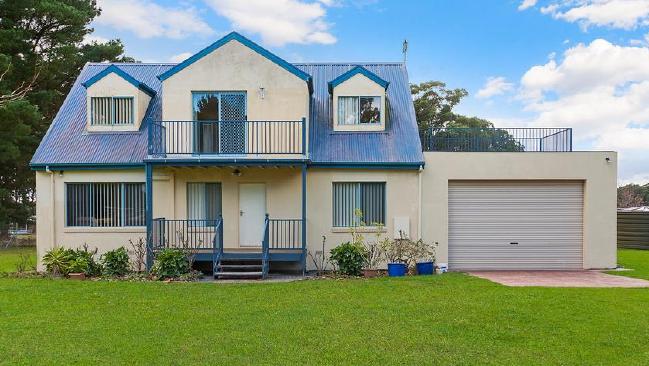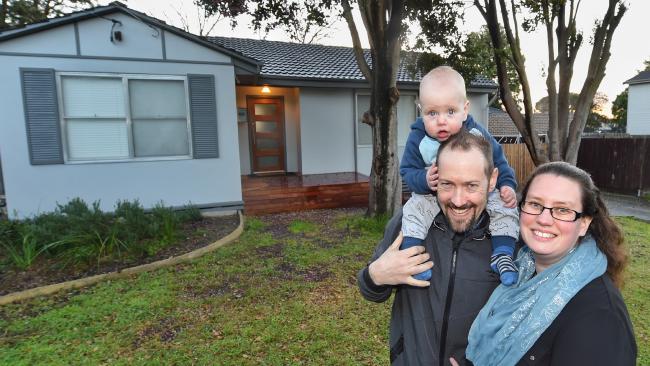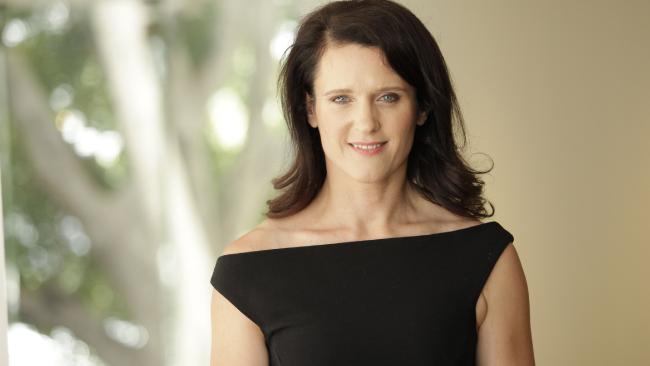HOMEOWNERS in parts of Melbourne are making as much as $1200 a day just by holding on to their houses, new research shows.
Victoria’s capital has overtaken Sydney to become the nation’s strongest performer for annual price growth in recent months — and a handful of suburbs are batting well above the city’s lofty average.
Figures from realestate.com.au and CoreLogic reveal northeastern fringe suburb Kinglake West recorded massive 51.6 per cent median house price growth in the year to June 30, to $580,000.

Kinglake West’s median price grew by 51.6 per cent in the year to June 30. 1092 Whittlesea-Kinglake Rd, Kinglake West, is for sale.
This was the biggest increase of all Melbourne suburbs in that period, well above the citywide 13.7 per cent gains, and equated to $541.10 per day.
It was followed by million-dollar suburb Essendon North, where house-owners earned $845.21 a day in capital growth, thanks to 44.4 per cent annual gains.
Abbotsford’s median jumped 38.2 per cent in the year, equating to $976.71 daily returns, and St Kilda’s, 33.7 per cent for $904.11 a day.
And houses in Princes Hill made an eye-watering $1205.48 a day, on average, due to 33.2 per cent annual growth.
Frankston North, Diggers Rest, Carlton and The Patch also had median house price rises of more than 30 per cent.
Realestate.com.au chief economist Nerida Conisbee said population growth, economic strength, job opportunities and relative affordability compared to Sydney were driving Melbourne’s market.
She said while many of the city’s biggest growth suburbs were north of the CBD, they were more widely spread than in other Aussie capitals.
“If you’re buying in Melbourne, you’re going to do pretty well. You don’t need to buy in a really expensive suburb to see strong price growth,” she said.
Mason White McDougall Real Estate agent Donna Wilson said she’d been “blown away” by the performance of Kinglake and Kinglake West’s property markets over the past year.
She said the suburbs’ big 1000-2000sq m blocks, affordability and small town lifestyle were luring more families to the former “sleepy hollow”, while low available housing stock was pushing up prices.

Frankston North enjoyed a 30 per cent increase in its median house price to $405,600, equating to $256.44 a day. Picture: Tony Gough
Ray White Carrum Downs’ Maggie Raad said Frankston North offered similar lures for first-home buyers and investors, including rare 600sq m blocks: “Eight months ago, the average house cost $400,000. Now we’re getting another $100,000 on top.”
Tegan Mackie said young couples like herself and husband Scott were transforming Frankston North by revitalising its old housing stock.
They’re privately selling the three-bedroom house they renovated at 40 Rosemary Cres to move on to acreage, with a price guide of $440,000-$480,000.
The value of units and apartments has also spiked dramatically in several Melbourne suburbs over the past year, flying in the face of oversupply concerns.
Strathmore’s median unit price soared 53.8 per cent or $732.88 per day, and Aberfeldie’s, 51 per cent or $636.99 per day.
MELBOURNE’S TOP CAPITAL GROWTH SUBURBS
FOR HOUSES:
Kinglake West: median price up 51.6% to $580,000 = $541.10 increase per day
Essendon North: up 44.4% to $1,003,500 = $845.21 per day
Abbotsford: up 38.2% to $1.29m = $976.71 per day
St Kilda: up 33.7% to $1.31m = $904.11 per day
Princes Hill: up 33.2% to $1,767,500 = $1205.48 per day
Diggers Rest: up 32.3% to $395,000 = $264.38 per day
Carlton: 31.3% to $1,318,500 = $861.64 per day
The Patch: 31.2% to $665,000 = $432.88 per day
Frankston North: up 30% to $405,600 = $256.44 per day
Lower Plenty: up 29.1% to $980,000 = $605.48 per day
FOR UNITS:
Strathmore: median price up 53.8% to $765,000 = $732.88 increase per day
Aberfeldie: up 51% to $688,500 = $636.99 per day
Wheelers Hill up 34.6% to $825,000 = $580.82 per day
Rowville: up 32.2% to $582,000 = $388.77 per day
Chirnside Park: up 28.5% to $535,000 = $325.34 per day
South Kingsville: up 26.5% to $650,000 = $372.60 per day
Sandringham: up 25.4% to $720,000 = $399.45 per day
Mount Eliza: up 24.8% to $535,000 = $291.10 per day
Sunshine North: up 23.4% to $434,500 = $226.03 per day
Greensborough: up 22.6% to $596,000 = $301.37 per day
Source: CoreLogic and realestate.com.au, for the year to June 30. Suburbs must have had at least 10 sales for inclusion
This article was originally published by Samantha Landy, Herald Sun, July 21, 2017

